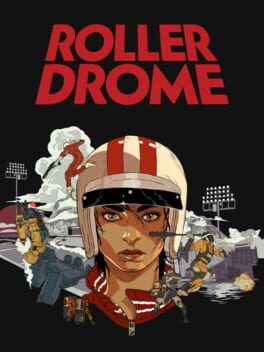Rollerdrome pulls back its systems and complexity to instead focus on movement and fluidity. The quarter pipes are your canvas to shoot the shit out of your enemies in increasingly badass ways in increasingly efficient runs. Rollerdrome sacrifices variety to instead put together a highly distilled and intentional experience where each level becomes an expression of the player's speed and pathing. The emphasis on constantly funneling the player back into the action by surrounding the maps in half pipes forces them to strategize around how to kill as many House Players as possible while maximizing ammo regeneration and their combo. By letting the game take over in aiming and movement, the player's priority then becomes planning and execution. There is a learning curve to this lack of control, but it rewards the player for experimenting and giving every challenge a solid attempt.
On a narrative level, this game is pretty light, but succeeds in creating a story that ultimately serves as solid context for why this sport exists. The lore reasoning for why things like ammo regenerate while doing tricks or who the House Players are serves to tie the whole package together. Despite this lack of emphasis, the developers at Roll7 smartly chose to make the story scraps serve an in-game purpose. Furthermore, the visual direction borrows the best part of 1970s sci-fi design language: contrast. Everything is perfectly readable and clear without resorting to a bloated interface or obvious signposting. Rollerdrome's strongest factor in visuals and narrative is how every color choice, readable document and narrative element serve a purpose. Rollerdrome puts all of its emphasis on gameplay without sacrificing cohesion or clarity.
On a narrative level, this game is pretty light, but succeeds in creating a story that ultimately serves as solid context for why this sport exists. The lore reasoning for why things like ammo regenerate while doing tricks or who the House Players are serves to tie the whole package together. Despite this lack of emphasis, the developers at Roll7 smartly chose to make the story scraps serve an in-game purpose. Furthermore, the visual direction borrows the best part of 1970s sci-fi design language: contrast. Everything is perfectly readable and clear without resorting to a bloated interface or obvious signposting. Rollerdrome's strongest factor in visuals and narrative is how every color choice, readable document and narrative element serve a purpose. Rollerdrome puts all of its emphasis on gameplay without sacrificing cohesion or clarity.
